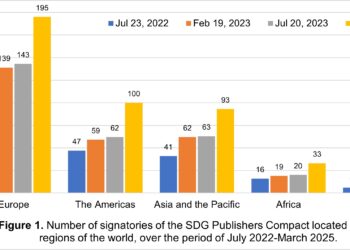
Annual reports have always been a form of organizational marketing. They are often glitzy. In the era of print, you could count on high production values — expensive paper, embossed covers, perfect binding, lots of photography. Nowadays, they range from beautifully formatted online booklets to interactive experiences, or a mix of both.
A serious annual report can add important color to an organization’s story. For instance, universities are required to publish a “tuition” number, which some have argued is extremely misleading without a set of contextual elements, leading too many students to the conclusion that college is unaffordable. Adding more context and information only helps in situations where a single number or table might let people jump to the wrong conclusions.
Adding context is an important function of longer annual reports, but are the reports themselves truly a form of transparency? Or just a hall of mirrors?
The unsurprising answer is, “It depends.”
If the organization is for-profit and publicly traded, an annual report can help explain strategic positioning and financial results, along with providing a glimpse of the vision of the executive team while outlining their credentials. Done right, this kind of organizational marketing can help attract investors, which bolsters the organization’s stock price and cash stores.
If the annual report is from a non-profit, it often focuses more on the mission of the organization and how well it has hewed to that important existential statement. Like its more corporate cousins, the report can be highly produced. For many non-profits, these reports are directed at their members and prospective members, and they tend to be briefer and reflect the marketing aim of adding members.
Reviewing some recent annual reports — required and self-generated — there seems to be a continuum of two inversely related aspects of annual reports. These two aspects boil down to transparency vs. rationalization.
On one end of the spectrum, we have the filings like the IRS 990 for non-profits and the slew of disclosures required by the Securities and Exchange Commission in the US (and comparable entities in many other countries). These documents are high on transparency and low on rationalization. In a few spots, the organization’s leaders have a chance to add some verbiage, but the documents are largely full of financial disclosures and checklists. The format is dictated by a disinterested third party, and failure to comply can lead to an organization’s status being revoked.
Despite their clinical cast, even these annual reports are usually pored over by executives and consultants to ensure both accuracy and the correct message and image. After all, any disclosure can have market implications.
The disclosure level of self-generated annual reports is far lower than the disclosures found in the formal filings with tax or governmental authorities. Things you won’t find in these annual reports but will find in IRS 990 forms and other governmental disclosures:
- Salaries for highly paid employees, typically top editors and top executives, including any bonuses paid
- Confirmation that financials are audited by an independent third-party
- Confirmation that proper governance practices were in place
- Confirmation that the organization did not participate in any political activities
- A list of primary vendors and the amounts they were paid
- A general breakdown of sources of revenue
Self-generated annual reports in our realm tended to be pretty dull, until a particularly eye-catching set from PLOS appeared in the early days of the organization — these were highly designed and highly promotional annual reports of revenues, expenses, and accomplishments, which often mixed financial, editorial, and organizational highlights. The reports also included selective financial information and no assurances of accountability or completeness.
These annual reports seemed geared to what PLOS needed to accomplish in its early days — that is, attracting funding from philanthropists and showing alignment with the open access (OA) community. The reports were politically charged and visionary documents, designed to stir emotions and attract funding and fans.
Even with selective information, the PLOS annual reports attracted scrutiny, and the scant data were teased apart to yield stories that were not especially flattering. This is the risk of transparency, even in small and carefully selected amounts.
Looking at PLOS’ tax documents (IRS 990) required of non-profits, more detail can be explored behind their annual reports. Instead of blended and selective cuts of their financials, specific information can be reviewed — how much PLOS paid its executives, how much it paid its major vendors, and salaries for its key staff, as well as its general margin of surplus and its returns on investments made with its retained earnings. None of these are available in the self-made annual reports. The IRS 990 also levels the playing field, as what the form requires is also required of every other non-profit publisher based in the US.
More fulsome disclosure allows for more granular scrutiny. The most recent IRS 990 filings by PLOS ignited something of a firestorm earlier this year on Twitter, as Andrew Kern, facing an invoice for an APC from PLOS, dug into the organization’s 990s. Michael Eisen, a PLOS Board member, felt compelled to respond, with plenty of rational points and interesting turns of phrase emerging. Perhaps a few are worth highlighting:
first of all, i agree completely that it costs way too much to publish in @PLOS @pastramimachine
— Michael Eisen (@mbeisen) March 15, 2016
but i also want to comment on your critique of @PLOS as a business, which I think is very unfair @pastramimachine
— Michael Eisen (@mbeisen) March 15, 2016
If you have a prurient interest in these kinds of things, the exchanges are worth reading in their entirety. More importantly, the greater transparency of the 990s had improved the arguments beyond what would have been possible using only prior, selective annual reports. This is an important distinction, as the IRS 990 creates a standard and comparable form of disclosure, not an idiosyncratic and selective form of organizational marketing that makes comparisons with other organizations difficult, if not impossible.
Annual reports produced by organizations like Oxford University Press, Cambridge University Press, and other non-profits belong on another part of the spectrum bridging from transparency to rationalization. Annual reports like these feature formal financial reports such as balance sheets and income statements, including required disclosures about how the numbers were generated and statements from tax authorities and/or auditors. Yet, they are a stronger form of marketing than mere financial disclosure — in the case of OUP and CUP, they are documents designed to market both their parent universities, while also marketing the press’ strengths to current and potential publishing customers.
So, it’s clear that annual reports — whether required and standardized, or optional and self-generated — always have a marketing purpose, which makes the recent 2015 eLife Annual Report a little puzzling, as it has no a priori marketing objectives. Why produce one? Who are they marketing to? They collect no money, and their funders don’t need marketing help — in fact, its main funder, Wellcome Trust, specifically keeps itself out of the thrall of donors.
In this case, it is apparently to call out other publishers to make their per-article costs just as transparent as what eLife offers in its annual report. Mark Patterson, eLife Executive Director, is quoted in a Times Higher Education piece as claiming the report is meant to “encourage other publishers to be more transparent about their costs.” Unfortunately, eLife’s report is itself rather opaque.
Like some of its ilk, the report provides some insights into the organization’s finances, but obscures many things, using questionable math to achieve certain ratios and make certain claims. It also leaves out many costs in order to generate a misleading cost-per-article calculation.
Costs that are left out of the equation include the approximately 2,400 square feet of office space, which seems to rent for about US$40 (furnished) per square foot, giving us an approximate cost of US$96,000 annually, or roughly another $100 per article. Legal fees, human resources, benefits, and other corporate overheads may or may not be captured, but experience suggests they have been left out, which would be another approximately 20-30% premium on all the fixed costs, which calculates out to another US$780,000 on the high side, or US$780 per article.
There is a lot of text expended rationalizing the amount of money eLife spends paying its editors. But little transparency is given, with only a single number for editorial salaries as a whole provided. Unlike in the IRS 990, no specific salaries are given. We can find recent ones elsewhere, fortunately.
The math on publishing costs in the eLife annual report is questionable, with some capital expenditures held out as non-publishing expenses despite their clear relevance to a long-term technology publishing plan. In fact, this bit of financial contortion removes 22% of their expenditures, which suppresses their per-article charge calculations by a similar amount. For example, the calculations without the capital expenditure for 2015 come out to about US$4,700 per article. But, with the capital expenditure factored back into the overall expenses, the per-article publishing cost rises to US$5,500.
Factoring in the work space, overheads, and capital expenditures, and the eLife cost-per-article goes from US$4,700 to roughly US$6,380. And we’re still not sure that we’ve seen all their expenses. This is approximately 27% more than Patterson states.
Luckily, we can look at previous IRS 990s to peek behind the annual report curtain. In 2014, eLife’s total expenses were US$5.6 million, while in his calculations for the eLife Annual Report, Patterson states them as the equivalent of US$3.9 million. The fully disclosed expenses are 31% more than Patterson states in his report for 2014. Based on these calculations, I’d assume that a rough guide would be that the eLife Annual Report understates their expenses by 30%.
There is another subtle form of underestimating costs at eLife, which comes from the fact that the organization is subsidized, and does not need to generate a surplus. Assuming a 10% surplus demand for a self-sufficient operation that needs to remain viable, survive variability, and invest in the future, we can assume that costs for eLife as a standalone, self-sufficient organization are underestimated by 40%. When comparing itself to other self-sufficient organizations, this is an important point. We’re now at US$6,600 per-article at eLife.
Patterson also claims the costs at eLife are falling, but costs do not generally fall uniformly. Costs on a per-article basis may fall because some costs are spread over more articles. Other costs may go up. And, as we’ve seen, capital expenses have increased but were kept out of the per-article calculations, along with other mixes of fixed and variable costs.
Comparing the IRS 990 for 2013 and 2014 (the 2015 is not posted yet on GuideStar), we see increases in salary of 8% to Randy Schekman (who claims to work 20 hours per week), while Patterson’s salary increased from 2013 to 2014 by 12%. According to the annual report, in 2015 editorial salaries were upwards of US$1 million. If spending were similar in 2014, Schekman and Patterson combined would have consumed more than one-third of the editorial salaries at eLife. With the amount of ink expended justifying editorial salaries, it may be that there is another steep increase in compensation for key employee compensation coming in the 2015 tax forms. Or the prior increases needed to be justified. But we don’t have enough transparency yet to know. We only have the rationalization in the report generated by eLife.
So clearly, eLife’s challenge to be more transparent is itself challenged by a lack of transparency. My calculations may be off, but we’ll know soon enough, when the IRS 990 for 2015 is released.
For eLife, this all boils down to a long rationalization around per-article costs. But why? Why show a per-article calculation and project a 2015 per-article publishing charge? And why try to make it appear lower than it actually is? . . . unless you’re laying the groundwork for a business model shift, from not charging authors to implementing an article processing charge (APC)?
Rumors have pointed in this direction for many months, and it seems inevitable. Nobody would be shocked, despite the recent renewal of support from eLife’s primary sponsors. While support was renewed, the amount of support and projected term of support were not disclosed. (A later post by Mark Patterson suggests the term is “several more years.”) There are rumors that a requirement of that continued support was a plan to become self-sufficient, which as eLife is an OA journal, would likely mean a financial plan based on APCs.
The eLife annual report is an interesting example of a report released more as a rationalization than as a form of disciplined transparency. On the continuum of transparency vs. rationalization, it is farther toward the “rationalization” end than any of the others I’ve seen.
Viewed within this paradigm, organizational annual reports are always at some level exercises in marketing. The goal of the marketing may be unclear, but they are marketing nonetheless. What eLife is marketing isn’t entirely clear, but we can guess. What OUP and CUP are marketing is much clearer — university brand and publishing savvy.
But we should never mistake annual reports for complete disclosure or full transparency. They are marketing exercises. They tell us what the organization wants us to believe.
Discussion
2 Thoughts on "Annual Reports — What Do They Actually Tell Us?"
Kent I am reminded of the old saw. I had to hire an accountant. I had three interviews and asked each the same question: How much is 2+2? Two of them said 4 and the third said: How much do you want it to be?



